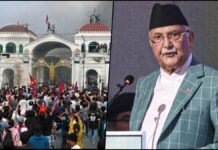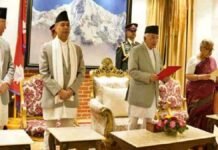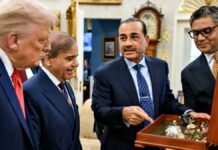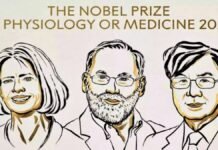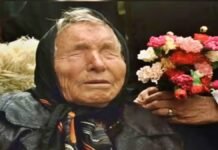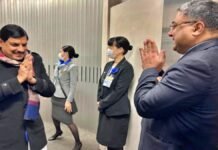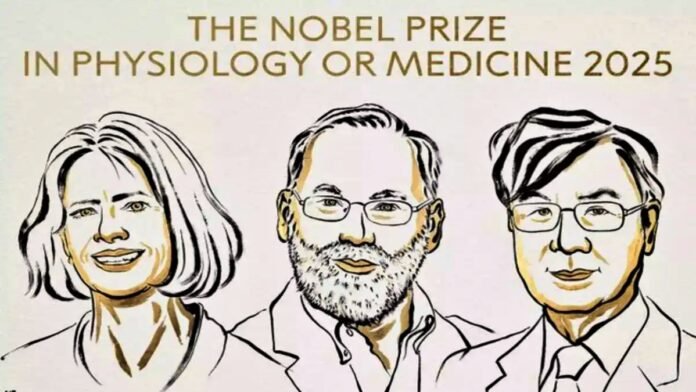
Key Points
- Mary E. Brunkow and Fred Ramsdell from the United States, along with Shimon Sakaguchi from Japan, have been awarded the 2025 Nobel Prize in Physiology or Medicine for groundbreaking discoveries on peripheral immune tolerance
- The laureates identified regulatory T cells (Tregs), the immune system’s “security guards” that prevent the body from attacking its own organs and tissues
- Sakaguchi made the first key discovery in 1995, challenging prevailing scientific beliefs by identifying these specialized immune cells
- Brunkow and Ramsdell identified the critical Foxp3 gene in 2001, which was linked to severe autoimmune disease IPEX, and Sakaguchi later proved in 2003 that this gene controls regulatory T cell development
- The discoveries have laid the foundation for developing new treatments for autoimmune diseases, cancer, allergies, and organ transplant complications currently being evaluated in clinical trials
- The prize includes 11 million Swedish crowns (approximately $1.2 million), a gold medal, and will be presented by Sweden’s king in December
- Brunkow initially missed the Nobel Committee’s call, thinking it was spam, and her husband recalled her response when informed was “Don’t be ridiculous”
New Delhi: The Nobel Assembly at Karolinska Institute in Stockholm announced on Monday, October 6, 2025, that the Nobel Prize in Physiology or Medicine has been jointly awarded to three pioneering scientists whose groundbreaking work has fundamentally transformed understanding of how the human immune system maintains balance. Mary E. Brunkow from the Institute for Systems Biology in Seattle, Fred Ramsdell from Sonoma Biotherapeutics in San Francisco, and Shimon Sakaguchi from Osaka University in Japan have been honored “for their discoveries concerning peripheral immune tolerance”.
The laureates’ revolutionary findings revealed how the immune system’s specialized “security guards”—regulatory T cells—prevent the body’s defense mechanisms from mistakenly attacking its own organs and tissues. This discovery has opened entirely new avenues for treating autoimmune diseases, developing more effective cancer therapies, and preventing serious complications following organ transplants and stem cell treatments.
The Immune System’s Delicate Balance
The human immune system represents an evolutionary masterpiece, protecting the body daily from thousands of different viruses, bacteria, and microbes attempting to invade. Without a functioning immune system, human survival would be impossible, yet this powerful defense mechanism must be carefully regulated to prevent it from turning against the body itself.
One of the immune system’s most remarkable capabilities is its ability to differentiate between dangerous pathogens and the body’s own healthy cells. This challenge is complicated by the fact that many microorganisms have evolved similarities to human cells as camouflage, making the immune system’s identification task extraordinarily complex.
When the immune system malfunctions and begins attacking the body’s own organs and tissues, the result is autoimmune diseases such as rheumatoid arthritis, type 1 diabetes, lupus, inflammatory bowel disease, and multiple sclerosis. Understanding how the body prevents such self-attack has been one of medicine’s most important research challenges.
Sakaguchi Swims Against the Tide in 1995
In 1995, Shimon Sakaguchi, now 74 years old, made the first crucial discovery that would eventually lead to this Nobel Prize recognition. At a time when the scientific consensus held that immune tolerance developed solely through a process called “central immune tolerance”—where potentially harmful immune cells are eliminated in the thymus gland—Sakaguchi challenged prevailing beliefs by identifying a new type of immune cell.
Sakaguchi’s pioneering research revealed that immune tolerance is far more complex than previously understood, discovering that specialized regulatory T cells operate outside the thymus to actively suppress immune responses and prevent autoimmune reactions. His findings demonstrated the existence of what scientists now call “peripheral immune tolerance,” a regulatory mechanism that operates throughout the body rather than just centrally in the thymus.
Marie Wahren-Herlenius, a professor of rheumatology at Karolinska Institute, explained the significance: “It pertains to how we regulate our immune system to combat all conceivable microbes while simultaneously preventing autoimmune diseases”.
Brunkow and Ramsdell Unlock the Genetic Key
Six years after Sakaguchi’s initial discovery, American scientists Mary Brunkow, now 64, and Fred Ramsdell, also 64, made the complementary breakthrough that would complete the puzzle. In 2001, working independently from Sakaguchi, the duo identified a critical genetic mutation in the Foxp3 gene in mice that made the animals highly prone to developing severe autoimmune disorders.
Their research revealed that this same gene mutation was linked to IPEX (Immunodysregulation Polyendocrinopathy Enteropathy X-linked syndrome), a rare but devastating human autoimmune disease that affects multiple organ systems. This discovery provided the molecular mechanism explaining how regulatory T cells are controlled at the genetic level.
Building on these combined findings, Sakaguchi demonstrated in 2003 that the Foxp3 gene directly controls the development and function of the regulatory T cells he had originally discovered. This final piece of research elegantly connected all the discoveries, showing how a single gene governs the immune system’s crucial self-tolerance mechanism.
“Don’t Be Ridiculous”: Winners’ Reactions
The announcement of the Nobel Prize produced memorable moments as the Nobel Committee attempted to contact the laureates early Monday morning. Secretary of the Nobel Assembly Thomas Perlmann revealed that only Sakaguchi could initially be reached at his laboratory in Japan.
Attempts to contact the two American researchers were unsuccessful, with Perlmann noting that their phones were likely on silent due to the time difference on the US West Coast. Brunkow later revealed she had actually seen the call from Sweden but dismissed it: “My phone rang, and I noticed the number from Stockholm and thought ‘That’s just spam or something similar,'” she recounted.
An Associated Press photographer who arrived at her Seattle residence delivered the news instead. Her husband, Ross Colquhoun, shared her initial reaction: “When I informed Mary that she had won, her response was, ‘Don’t be ridiculous'”.
Sakaguchi, speaking at a press conference from the University of Osaka, expressed his delight: “It was a wonderful surprise. I hope that research in this field will continue to advance so that our discoveries can be applied in treatments, and I aim to contribute to that as well”. Perlmann added that Sakaguchi “sounded incredibly grateful and expressed that it was a fantastic honour”.
Who Are the Nobel Laureates?
Mary E. Brunkow was born in 1961 and earned her doctoral degree from Princeton University in New Jersey. She currently serves as Senior Program Manager at the Institute for Systems Biology in Seattle, where she coordinates scientific initiatives and advances research efforts in immunology and systems biology.
Fred Ramsdell was born in 1960 and completed his PhD in 1987 at the University of California, Los Angeles. He now works as Scientific Advisor at Sonoma Biotherapeutics, a biotechnology company based in San Francisco, where he applies his expertise to developing innovative therapies targeting immune-related diseases.
Shimon Sakaguchi, born in 1951, received both his medical degree in 1976 and his PhD in 1983 from Kyoto University in Japan. He currently holds the prestigious title of Distinguished Professor at the Immunology Frontier Research Center at Osaka University, where he leads pioneering immunology research.
Transformative Impact on Medicine
The Nobel Committee emphasized that the laureates’ discoveries “have laid the foundation for a new field of research and spurred the development of new treatments, for example for cancer and autoimmune diseases”. Olle Kämpe, chair of the Nobel Committee, stated: “Their discoveries have been decisive for our understanding of how the immune system functions and why we do not all develop serious autoimmune diseases”.
The research has opened multiple therapeutic avenues currently being explored in clinical trials worldwide. For autoimmune diseases, the discoveries offer hope for more targeted treatments that could restore proper immune balance without broadly suppressing the entire immune system. In cancer therapy, understanding regulatory T cells has revealed why some tumors evade immune detection, potentially leading to more effective immunotherapy approaches.
The findings also hold promise for organ transplantation, where preventing rejection while avoiding excessive immunosuppression remains a critical challenge. Additionally, the research may lead to better treatments for allergies and approaches to prevent serious complications following stem cell transplants.
Nobel Prize Traditions and Schedule
The Nobel Prizes were established through the will of Alfred Nobel, the Swedish inventor of dynamite and a wealthy businessman. The awards have been presented since 1901 for outstanding contributions in science, literature, and peace, with interruptions mainly during the World Wars. The economics prize was added later and is funded by Sweden’s central bank, the Riksbank.
The Medicine prize traditionally opens the Nobel Prize season, followed by announcements in Physics, Chemistry, Literature, Peace, and Economics in subsequent days. All prizes are presented in Stockholm in December, except the Peace Prize, which is awarded in Oslo—likely a remnant from the political relationship between Sweden and Norway during Nobel’s lifetime.
The 2025 Medicine laureates will share the prize sum of 11 million Swedish crowns (approximately $1.2 million), and each will receive a gold medal presented by Sweden’s king during the December ceremony. The Nobel Assembly at Karolinska Institute, Sweden’s prestigious medical university, is responsible for selecting the Medicine laureates through a rigorous evaluation process.





